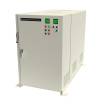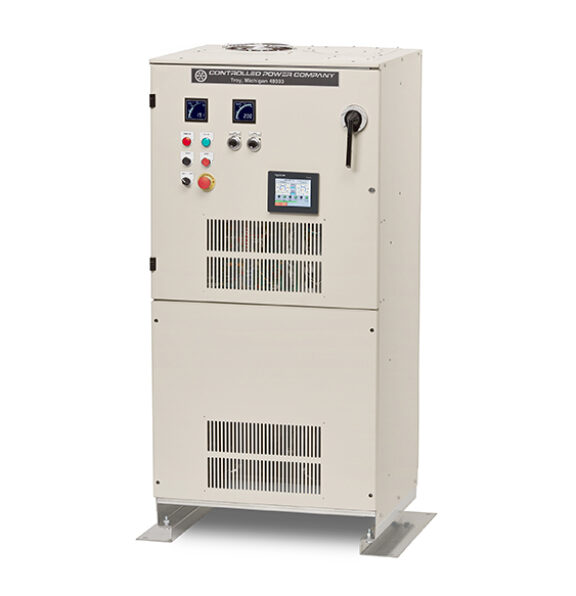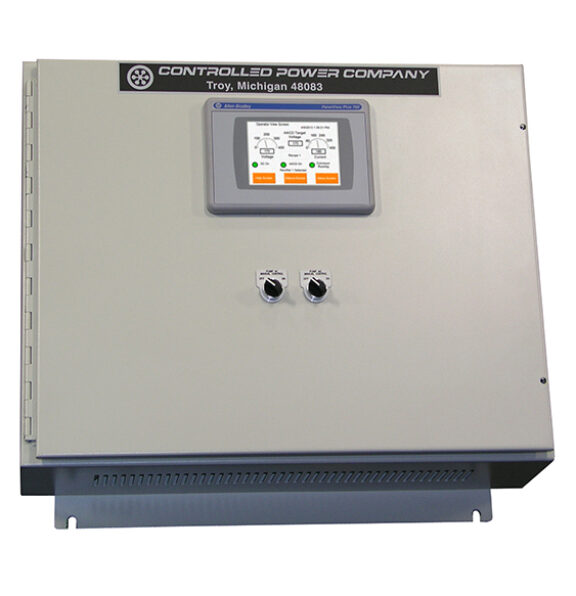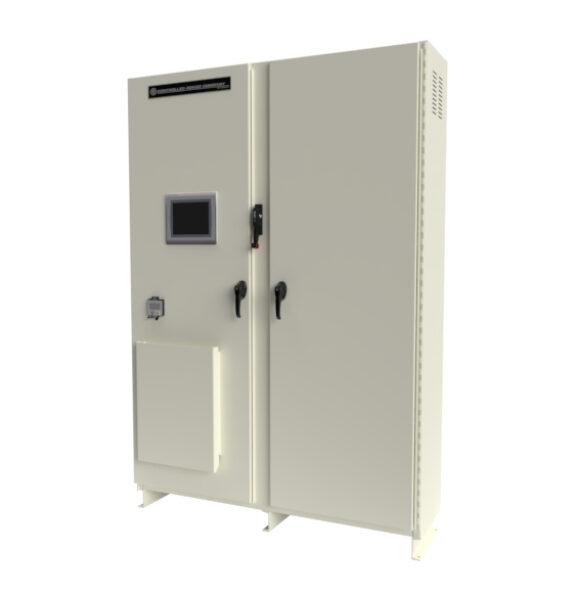Our team is here to support you and solve your power challenges. Connect with our responsive experts today to learn about our customized power solutions and products.
Series 50 Rectifier (100 V - 1000 VDC, 500 A - 5,000 A)
The Series 50 is a secondary SCR, single transformer, DC power supply (rectifier) for e-coating, anodizing, and other industrial DC powered applications. The Series 50 rectifiers include two product models: 506 and 5012. The Model 506 is a 6-pulse rectifier that provides reliable, regulated DC power for most DC applications. The Model 5012 is a 12-pulse rectifier used in applications requiring lower output AC RMS ripple and reduced input harmonics.
Both models are available in air- or water-cooled configurations. The Series 50 rectifiers are available in a NEMA 1, NEMA 2, or NEMA 3R enclosure.
Applications
- Plating
- Anodizing
- Electro-machining
- Testing
- Electro-winning
- Electro-galvanizing
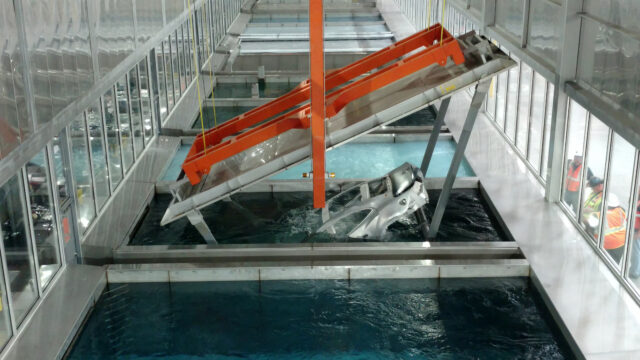
Product Specifications
Basic Specs
- Input AC Voltage: 208V – 600V 3 Phase
- Output DC Voltage Range: 100V – 1,000V
- Output DC Current Range: 500A – 5,000A
Features and Benefits
- High efficiency
- Air- or water-cooled flexibility
- Domestic and international voltage capability
- Low ripple
- Tight voltage and current regulation
- Diagnostic options for ease of maintenance
- Plant PLC network integration
Performance Specs
- Input Line Variation: ± 5% from nominal (± 10% optional)
- Output Voltage Regulation: ± 0.5%
- Output Current Regulation: ± 0.5%
- Optional AC RMS Output Ripple at Full Current: 5% operating at 25% to 100% output voltage (Model 506); 1% operating at 25% to 100% output voltage (Model 5012) — includes integrated output filtering
- Efficiency: 95% typical, size dependent
Frequently Asked Questions
What size rectifier do I need?
Rectifier sizing is influenced by many variables, including part size, anode cell area, chemical/paint characteristics, and process time. The chemical/paint or the finishing system supplier usually recommends the rectifier size required for the application. In e-coat, the output voltage of the rectifier is usually 400V or 500V maximum. As a general rule-of-thumb, output current is usually 2.5A per square foot of metal for a 2-minute dwell time, with a film build of 1 mil of paint.
Which is better: air- or water-cooling?
The environment where the rectifier will be placed usually determines the best type of cooling. For harsh, corrosive, or high-temperature environments, water-cooling is best suited.
What are the differences between the Model 506 and Model 5012 designs and their applications?
The Model 506 is a 6-pulse rectifier design used for most DC powered applications. The Model 506 provides reliable, regulated power for applications requiring u0026gt;100VDC. AC output ripple is usually 5%, from 25% to 100% of the output voltage range.rnrnThe Model 5012 is a 12-pulse rectifier used in applications requiring lower output AC RMS ripple and reduced input harmonics. AC output ripple for Model 5012 systems is 1%, from 25% to 100% of the output voltage range. Current harmonics are u0026lt;15%.
How can I reduce or eliminate downtime?
Purchasing and installing a second backup rectifier connected in parallel with the existing rectifier and a DC switch, will virtually eliminate downtime. In this scenario, if a rectifier happens to go down or is being serviced, a backup unit can be brought online within a few minutes. For more information, see our Options document entitled u0022DC Transfer Switchesu0022 for details about DC switch and backup rectifier configurations.
Which leg of the rectifier is grounded?
The rectifier output is isolated, allowing either leg to be grounded per process requirements.
Can I control or monitor the rectifier with my PLC?
Yes. As an option, Controlled Power Company offers single channel computer interface cards for monitoring and/or control of the rectifier. The computer interface card can be configured for 0 to 10 volt, 0 to 5 volt, or 4 to 20 mA signals. Additionally, we offer integrated distributed I/O modules so that communications with the PLC can be performed over Ethernet or serial connections, instead of running analog signals.
How can I reduce the floor space needed for rectifiers used in my process?
Controlled Power Company is able to custom design rectifier cabinets for limited floor space or single side access. We are also able to provide multiple rectifiers in a single enclosure.
Do I need a separate feeder transformer for the rectifier?
The rectifier does not require a separate feeder transformer; however depending on site requirements, one may be necessary. Please discuss this with an electrical contractor or a consultant for further information.
When do I need a DC switch?
A DC switch is used for isolating the output of a rectifier and may be configured for various applications to reduce downtime. When downtime is unacceptable, a DC switch connected to the normal production unit and a standby unit provides a quick means of switching between the two in the event of a failure or for routine maintenance. The DC switch ensures that DC power is not present in the rectifier, so that it can be serviced safely by repair personnel. While the down unit is being serviced, the other unit will operate normally. You will not need to shut down the line when servicing the rectifiers. For multi-zone operation, there are many different configurations for DC switches. The most common is that a DC switch enables one rectifier to supply power to any zone. This can be either of the two primary rectifiers, or even a standby. A DC switch may also be configured to switch one rectifier between multiple tanks.
How can I increase my rectifier current output?
A second Series 50 rectifier may be connected in parallel. The parallel control option will allow both units to equally share the load current. Some changes to the existing unit may be required.

